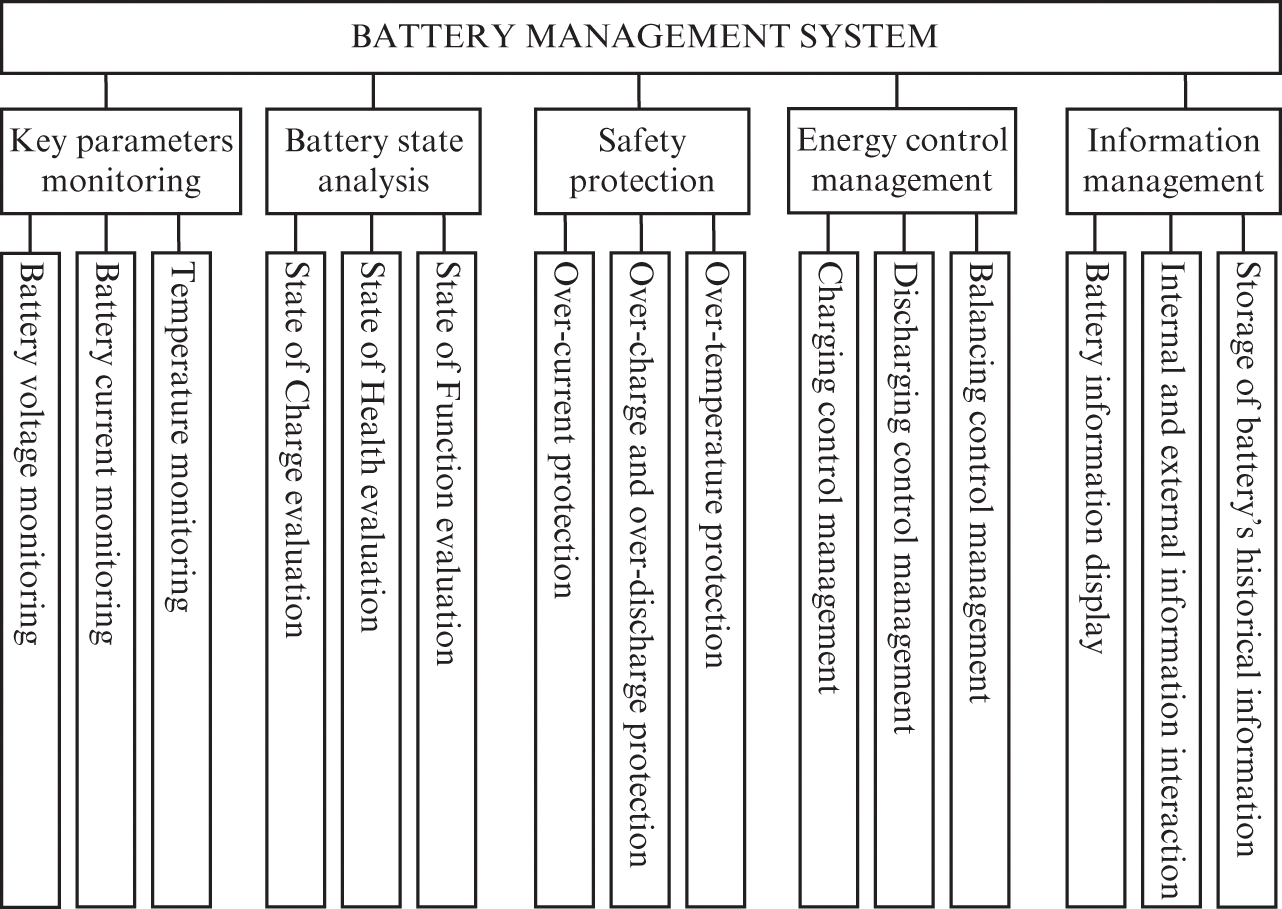2 General Requirements (Functions and Features)
2.1 Basic Functions of a BMS
Electric vehicles are the most typical representatives of BMS applications at present. In this section, the main functions of a BMS are described by the functional block diagram of the BMS for electric vehicles (Figure 2.1).

Figure 2.1 Basic functions of the BMS for electric vehicles.
The functions of the BMS for the electric vehicle may be different from those shown in Figure 2.1 in different applications, but the BMS should have the basic functions shown in the figure, for example, voltage monitoring, SoC estimation, safety protection, etc. The main functions of a BMS are described as follows.
2.1.1 Key Parameter Monitoring
Key parameter monitoring of a battery refers to the monitoring of voltage, current, and temperature. Unlike voltage and current monitoring, in addition to battery temperature monitoring, the temperature monitoring includes in-car temperature and ambient temperature monitoring, and the battery can be more reasonably used by monitoring multiple temperature parameters.
Key parameter monitoring of a battery is the most basic function of a battery management system and the premise and foundation of other functions. For example, the battery state analysis (SoC, SoF, and SoH evaluations) described in the next section depends on accurate and timely voltage, current, and temperature monitoring. ...
Get Battery Management System and its Applications now with the O’Reilly learning platform.
O’Reilly members experience books, live events, courses curated by job role, and more from O’Reilly and nearly 200 top publishers.

